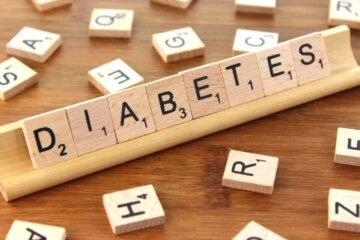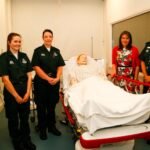There’s a crucial importance in maintaining optimal sodium levels in your body, especially as you age. As an elder, ensuring that you have a balanced sodium intake is key to supporting your overall health and well-being. By incorporating sodium-rich foods like olives, cheese, and smoked meats into your diet, as well as hydrating with natural electrolyte sources such as coconut water, you can naturally boost your sodium levels. Remember to aim for a balanced salt intake and consult with healthcare professionals to monitor your sodium levels regularly. Let’s explore how you can increase your sodium levels naturally as an elderly individual.
Key Takeaways:
- Incorporate sodium-rich foods: Include foods like olives, cheese, and smoked/cured meats in your diet to naturally boost sodium levels.
- Include fruits and vegetables: Tomatoes, beets, carrots, and celery can also contribute to your sodium intake while providing vital nutrients.
- Stay hydrated with electrolytes: Coconut water is a natural source of electrolytes, including sodium, to support your body’s sodium balance.
- Maintain a balanced salt intake: Use salt in moderation to enhance flavor without risking health concerns like high blood pressure.
- Medical monitoring: Regular check-ups and blood tests can help healthcare providers monitor your sodium levels and overall well-being to maintain a balanced sodium equilibrium.
Incorporating Sodium-Rich Foods
Embracing Savoury Foods
Before we look into the world of sodium-rich foods, it’s important to understand the importance of incorporating them into your diet. Embracing the savoury allure of foods naturally high in sodium can be a delightful and practical approach to increasing your sodium intake. Foods like olives, cheese, and smoked or cured meats not only bring a burst of flavor to your meals but also contribute valuable sodium content to your plate. By including these savory options in your diet, you can enhance the spectrum of flavors while nourishing your body with vital nutrients.
Including Fruits and Vegetables
Savoury fruits and vegetables play a vital role in maintaining your sodium balance naturally. You can incorporate produce like tomatoes, beets, carrots, and celery into your meals to subtly boost your sodium intake. These seemingly ordinary ingredients offer more than just vitamins and minerals – they provide a meaningful contribution to your overall sodium levels. By including a variety of fruits and vegetables in your diet, you can ensure that you are getting a balanced mix of nutrients, including sodium, to support your health and well-being.
Hydration and Electrolytes
Opting for Coconut Water
Little did you know, staying hydrated is not just about drinking water. By opting for coconut water, you can give your body a natural source of electrolytes, including sodium. Coconut water not only quenches your thirst but also supports your body’s sodium balance, helping to maintain optimal cell function and fluid balance. Incorporating this delicious alternative into your hydration routine can be a simple yet effective way to boost your sodium levels naturally.
Importance of Electrolytes
Even though sodium is just one of the many electrolytes that play a vital role in maintaining your body’s delicate balance of fluids, it stands out as a key player. Electrolytes like sodium are crucial for optimal cell function and overall well-being. While indulging in coconut water, you’re fortifying your body’s intricate sodium equilibrium, ensuring that your health is well taken care of.
Balancing Salt Intake
Benefits of Salt Moderation
You may not realize the impact of excessive salt consumption on your health. By practicing moderation, you can prevent health concerns such as high blood pressure, which can have detrimental effects on your well-being. Maintaining a balanced sodium intake is crucial for your overall health and vitality.
Safe Sodium Consumption Levels
An important aspect of managing your salt intake is understanding safe sodium consumption levels. The American Heart Association recommends consuming no more than 2,300 milligrams of sodium per day, with an ideal limit of 1,500 milligrams per day for most adults. By following these guidelines, you can promote a healthy sodium equilibrium in your body and reduce the risk of negative health effects associated with excessive salt intake.
Medical Monitoring
Importance of Regular Check-ups
To ensure your sodium levels are in check, it is crucial to prioritize regular medical check-ups and blood tests. These appointments are not just routine tasks; they are vital tools that provide insights into your sodium levels and overall well-being. By staying committed to your check-ups, you are actively participating in the maintenance of your health and allowing healthcare providers to guide you on maintaining a balanced sodium equilibrium.
Collaboration with Healthcare Professionals
Collaborating with healthcare professionals who understand the intricacies of your body is crucial in ensuring your sodium levels are in balance. Regular health check-ups allow healthcare providers to monitor your sodium levels and overall well-being, guiding you on the path to optimal health.
Summing up
So, when it comes to increasing sodium levels naturally, it’s important to embrace a well-balanced diet that includes sodium-rich foods like olives, cheese, and smoked meats. These delicious options not only add flavor to your meals but also provide valuable nutrients. Incorporating fruits and vegetables like tomatoes, beets, carrots, and celery can subtly boost your sodium intake while offering imperative vitamins and minerals.
Staying hydrated with electrolyte-rich beverages like coconut water can support your body’s sodium balance. Remember to aim for a balanced salt intake, enjoying salt in moderation to avoid potential health concerns like high blood pressure. Lastly, regular medical check-ups and blood tests are crucial in monitoring your sodium levels and overall well-being. By taking these steps, you can naturally increase your sodium levels while prioritizing your health and well-being.
FAQ
Q: How can elderly individuals naturally increase their sodium levels?
A: Elderly individuals can naturally increase their sodium levels by incorporating sodium-rich foods into their diet, such as olives, cheese, smoked or cured meats, tomatoes, beets, carrots, and celery.
Q: What are some natural sources of electrolytes that can help maintain sodium balance in elderly individuals?
A: Coconut water is a natural source of electrolytes, including sodium, that can help maintain sodium balance in elderly individuals while also providing hydration.
Q: Why is moderation important when it comes to salt intake for elderly individuals?
A: Moderation is important when it comes to salt intake for elderly individuals to avoid health concerns like high blood pressure. While sodium is a necessary nutrient, excessive salt intake can have negative impacts on health.



















